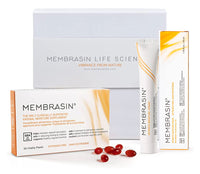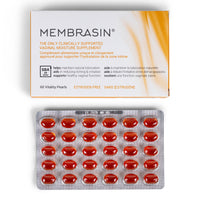Is Exercise Causing My Vaginal Discomfort?
Vaginal discomfort can strike no matter how old you are, and an often-overlooked culprit is exercise. Exercise is an essential component of health (and it can even relieve certain menopausal symptoms like osteoporosis and loss of muscle), but some activities are more vagina-friendly than others. Exercise is an integral part of whole-body health, which means it’s important for your vaginal health, so striking the right balance is critical. Find out if your workout could be the reason your vagina feels off lately.

How Exercise Can Affect Your Vagina
If you work out frequently, your vagina may experience adverse side effects, sometimes called sports vagina, that include exercise-related symptoms like chafing, itching, and burning. Sports vagina can put you at higher risk for yeast and bacterial infections. Sometimes, these symptoms of vaginal discomfort happen because you’re sweating, so it’s a good idea to immediately remove workout clothes after you’re finished exercising and not wear workout clothes that are too tight. You run other risks by keeping your workout clothes on after exercising: like an infected sweat gland or athlete’s foot.
Some exercise routines are more likely to irritate your vagina than others. Spinning or bicycling can often create saddle soreness (pain in your vulva or backside). You can often mitigate this by ensuring the handlebars are not lower than the saddle in order to alleviate the pressure. Swimming is often connected with yeast infections, but you can lower your risk of contracting one by not leaving your swimsuit on longer than necessary. Vaginal chafing can strike during many different activities: running, biking, or even a long walk. You may be able to prevent chafing and other forms of vaginal discomfort by keeping your pubic hair natural (since stubble can irritate the skin) and using a lubricant before you exercise.
Vagina-Friendly Exercises
A few simple workarounds can solve most vaginal discomfort caused by exercise. If you already have chronic vaginal dryness, you may want to choose exercise routines that will be easier on your vagina. Choosing workouts with less friction can also help you prevent pesky ingrown hairs. Gentle movements that don’t put a strain on your vagina—like yoga or Pilates—can ease vaginal discomfort symptoms as long as you remove your workout clothes promptly afterward. Avoid routines that include one motion repeatedly, and stick to a practice that involves a lot of variety.

Don’t forget that vaginal exercise is important, too. Kegel exercises may be the most vagina-friendly exercises because they strengthen the pelvic floor. Having a strong pelvic floor can help prevent prolapse and urinary incontinence and can increase sexual pleasure and function. Plus, the exercises are easy to do and require no equipment. Start by contracting the muscles you use to stop your urine flow, hold for ten seconds, and release. As you build up strength, you can tense harder for longer periods. If you have questions about your pelvic floor health, ask your OB-GYN next time you visit, and they can give individualized insight and treatment options.
Don’t Let Vaginal Discomfort Keep You From Living Your Life
If you experience vaginal dryness, exercise will be more uncomfortable. Membrasin® has created products that help support vaginal moisture, both topically and from the inside out. Get back to your workout routine and more with our 2-Step Starter Pack.




